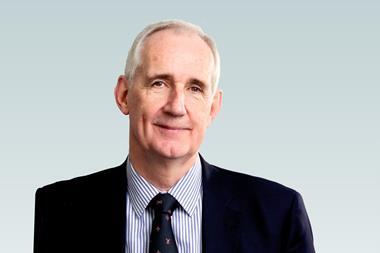A new report tracks the progress of international expansion in food retailing and defines the world’s top 50 retailers in the market. Rod Addy reports
CIES cites Ahold as a prime example where the debt burden of expansion became unsustainable while at the same time organisational complexity led to inefficiencies and accounting irregularities.
The top international retailers are in a second phase of expansion in which they are attempting to consolidate their initial overseas acquisitions or openings in foreign markets, according to new research into the global performance of food retailers.
The study, by CIES and consultants M+M Planet Retail, says retailers have learned what has worked - and what has not - from their inititial efforts to internationalise and are in a position to build.
Gustavo Trompiz, one of the report’s authors, says a pack of leading retailers has gained a head start on competitors.“This group has continued to expand and members have established a global reach and power base. They include Wal-Mart, Carrefour, Metro, Tesco and Casino.”
Trompiz says that a key test for the pack leaders is whether they can overcome the challenges of tough markets such as Japan and Germany.
The US, Germany, Japan and Poland are all proving hard nuts for international retailers to crack - the last three because of their weak economies, he says.
By contrast,the most fertile areas for growth are Latin America, Thailand, China, Russia and Eastern Europe and India.
Helen Dickinson, retail partner at KPMG, agrees: “China, partly because of its size and because it’s a developing economy, has a rapid period of growth ahead of it.”
But retailers aiming to seize such opportunities must take care to avoid the pitfalls of international expansion.
One major danger, says the report, is the temptation to open up in too many markets too quickly. The company that falls into this trap soon becomes unable to adequately control organisational and operational change and its financial performance must inevitably suffer.
Another danger lies in a company taking its eye off its domestic markets as it pursues its global ambitions. Dickinson says: “If you’re struggling in the domestic market, diverting attention overseas could be a mistake.”
Marks and Spencer - forced to pull out of its international markets in 2001 - fell into this trap, she says. “If it had timed things differently, maybe it would have been able to make a better go of it.”
If these are the pitfalls, what are the strategies that have proved successful? While there is no guaranteed method for success in international expansion, Trompiz says: “The top names have used a mixture of mergers and acquisitions, organic expansion and joint ventures.”
However, the CIES report highlights the approaches taken by several major retailers. Contributing to the success of Wal-Mart and Tesco, for example, is their ability to transfer supply chain and sourcing prowess to overseas business.
Cies attributes Carrefour’s success to its versatility as a multi-channel retailer, enabling it to adapt to and cater for the varied demands of international markets.
And Metro’s development of its cash and carry business has helped it generate sufficient scale in international markets by acting as a hub for trade customers.
Dickinson adds that there is no substitute for understanding the culture of the market you want to grow in. “Culture is the key factor influencing success. For example, Tesco mainly uses local people as workers in its international retail formats.”
Understanding supplier relationships, customers, buying and eating habits and trading laws are vital parts of a culture that any retailer entering an overseas market must become familiar with.
Trompiz concludes: “It is important to remember that international expansion in food retailing is still in its early days. For operators efficient in global sourcing and flexible in local retailing, the potential is there for accelerating international growth.”
CIES cites Ahold as a prime example where the debt burden of expansion became unsustainable while at the same time organisational complexity led to inefficiencies and accounting irregularities.
The top international retailers are in a second phase of expansion in which they are attempting to consolidate their initial overseas acquisitions or openings in foreign markets, according to new research into the global performance of food retailers.
The study, by CIES and consultants M+M Planet Retail, says retailers have learned what has worked - and what has not - from their inititial efforts to internationalise and are in a position to build.
Gustavo Trompiz, one of the report’s authors, says a pack of leading retailers has gained a head start on competitors.“This group has continued to expand and members have established a global reach and power base. They include Wal-Mart, Carrefour, Metro, Tesco and Casino.”
Trompiz says that a key test for the pack leaders is whether they can overcome the challenges of tough markets such as Japan and Germany.
The US, Germany, Japan and Poland are all proving hard nuts for international retailers to crack - the last three because of their weak economies, he says.
By contrast,the most fertile areas for growth are Latin America, Thailand, China, Russia and Eastern Europe and India.
Helen Dickinson, retail partner at KPMG, agrees: “China, partly because of its size and because it’s a developing economy, has a rapid period of growth ahead of it.”
But retailers aiming to seize such opportunities must take care to avoid the pitfalls of international expansion.
One major danger, says the report, is the temptation to open up in too many markets too quickly. The company that falls into this trap soon becomes unable to adequately control organisational and operational change and its financial performance must inevitably suffer.
Another danger lies in a company taking its eye off its domestic markets as it pursues its global ambitions. Dickinson says: “If you’re struggling in the domestic market, diverting attention overseas could be a mistake.”
Marks and Spencer - forced to pull out of its international markets in 2001 - fell into this trap, she says. “If it had timed things differently, maybe it would have been able to make a better go of it.”
If these are the pitfalls, what are the strategies that have proved successful? While there is no guaranteed method for success in international expansion, Trompiz says: “The top names have used a mixture of mergers and acquisitions, organic expansion and joint ventures.”
However, the CIES report highlights the approaches taken by several major retailers. Contributing to the success of Wal-Mart and Tesco, for example, is their ability to transfer supply chain and sourcing prowess to overseas business.
Cies attributes Carrefour’s success to its versatility as a multi-channel retailer, enabling it to adapt to and cater for the varied demands of international markets.
And Metro’s development of its cash and carry business has helped it generate sufficient scale in international markets by acting as a hub for trade customers.
Dickinson adds that there is no substitute for understanding the culture of the market you want to grow in. “Culture is the key factor influencing success. For example, Tesco mainly uses local people as workers in its international retail formats.”
Understanding supplier relationships, customers, buying and eating habits and trading laws are vital parts of a culture that any retailer entering an overseas market must become familiar with.
Trompiz concludes: “It is important to remember that international expansion in food retailing is still in its early days. For operators efficient in global sourcing and flexible in local retailing, the potential is there for accelerating international growth.”















No comments yet